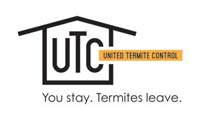Termite Wood Repair vs. Replacement: Making the Best Decision for Your Home
After discovering and eradicating a termite infestation, the natural next step for most homeowners is to identify how to address any damage that was done by these destructive pests. In some instances, damaged wood may need to be replaced, while in others, non-structural repairs may suffice.
You can determine whether a termite wood repair or replacement is necessary after first assessing the damage. This assessment – and any subsequent repairs – should only happen after a pest professional has confirmed that there are no longer any termites and the risk of immediate reinfestation has been eliminated. When assessing the damage, you will want to look for the following signs:
- Buckled ceilings or walls
- The appearance of water damage
- Tunneling or maze-like designs in the wood
- Mud tunnels on exterior walls or the home’s foundation
You will likely want to work with a professional and have them complete a whole-home inspection and assessment to determine the extent of the damage. In some instances, the damage may not be visible, and advanced termite damage can greatly impair the structural integrity of your home. It can even cause ceilings or floors to collapse and create other safety issues in your home. Therefore, you should still request a professional inspection, even if you think the damage is minimal.
Once a professional inspection has uncovered the true extent of the damage, you can then begin to develop a plan to address the damage. There are two ways to move forward. In cases with extensive damage, you will want to work with a professional contractor to ensure that the structural integrity of the home remains intact while all repairs are made.
When there is minimal damage, you may opt to address it yourself. There are two primary ways to repair termite damage to wood – replacing it entirely or adding wood support adjacent to the damaged wood. In most cases, the repair will be easier and less costly if you add a wood support to damaged wood. This type of repair works well for non-structural repairs, and sometimes even structural ones, although structural repairs and additional support are usually much more complicated. These complex repairs should be completed as soon as possible to restore the structural integrity of your home.
However, if the termite damage is detected before it impacts the structural elements of your home, siding, decking, or trim, you may be able to replace all of the damaged wood yourself without hiring a contractor (although you will still want a professional assessment when determining the extent of the damage). If the damage isn’t extensive, you can also repair the grooves and tunnels carved into the wood by termites by filling the void with a water-based wood filler or wood putty. After it has dried, you can sand it smooth and reapply the finish.
Addressing terming wood repair is never a fun process. Regular, annual termite inspections are the best way to ensure that your home stays free of termites, or at the very least, you can catch an infestation early, before any structural damage has been done. For more information about termite wood repair, contact United Termite Control today.

